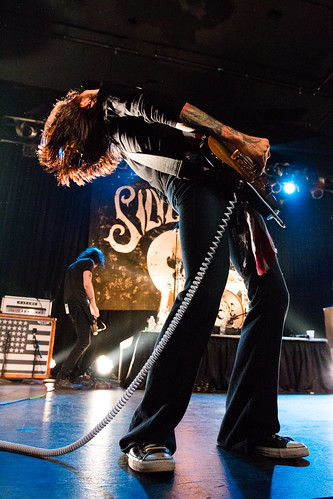Canon 70D Review
When the Canon 70D was announced it packed some new and unique features as well as some old staples. The design lends a lot from it’s predecessor the Canon 60D. But it added a new sensor as well as a new type of auto focus called dual pixel af.
As you know with my reviews I try not to worry about specs as much as how a camera actually handles. In the case of the 70D I was looking for how the camera handled with stills in the low light situation of a concert as well as how the new dual pixel af worked for video.
Let’s first take a look at the camera itself. It feels great in the hands and the buttons seem to be in the right places. Canon offers a ton of direct function buttons on the top of the camera that allow you to access things like the ISO, Focus Modes and Metering.

The camera has a large touch display that does allow for multi touch. I personally enjoy using the touch screen for working my way around the functions of the camera. When it comes to the menu system I prefer using the dedicated dials as that tends to go much quicker. I hope to see a touch screen like this come in to play with some of the more expensive cameras in the future.
I really started to fall in love with how the menu system works. Everything has its own page and you don’t have to continually scroll until you find what you are looking for. Each menu only takes up the length of the screen before you have to switch tabs.
But the real question comes down to how are the images in low light situations. We all know that just about any camera will perform very well with an abundance of light. But the real deciding factor for me with cameras is how do they handle the tough low light situations of concert photography.
I took this camera to a Silvertide concert at the TLA in Philly which is known for having some terrible light. Usually it’s a lot of backlight with very little front light. I had a tough tough time trying to get clean sharp images during the show. I tried to keep the ISO pretty low at 2500 but ended up bumping it to 4000 for part of the show. I could not for the life of me freeze any motion and beyond that the previews looked like swiss cheese. When I say swiss cheese I refer to the amount of noise and grain that was showing up on the screen.
Like I said above this is one of the toughest situations to put a camera through especially at a venue where the lighting is terrible. When I tested out the Nikon D7100 I shot a concert with great results but it was at a much better lit venue. So I can’t sit here and tell you the Canon wouldn’t have done better in that other concert situation.
Where the low light results were a disappointment the camera handled very well in regular lighting conditions. It got to the point where it seemed like I couldn’t miss, i was getting tack sharp image after tack sharp images. These images were bright, colorful and ready to go right out of the camera.
The 70D now shoots at 7 frames per second where the 60D only did 6. This is lighting quick compared to even pro cameras. But remember, having the ability to shoot 7 frames a second doesn’t mean you should. Look at it as when the time is right you snap off a quick burst of 2 or 3 images and capture that moment you were looking for.
The new focusing system of this camera seems to handle its self very well. You have your options to track moving subjects as well as the single focus mode. All and all in my regular light tests everything seemed to work out very well.
Wrapping up the still portion of this review I think the camera did very well. For anyone picking up their first camera or upgrading from a Canon Rebel I think they will be very happy with their results. Keep in mind that if you don’t understand the fundamentals of photography and expect the camera to do all the work and you end up with not so great images, it’s you, not the camera.
Now let’s move on to the video portion of this review. I feel this camera is more of a video camera than still camera. This is one of the first DSLR’s on the market to actually have solid continuos auto focus.
I had the chance to spend the day filming Silvertide before during and after a recent concert. I used the Canon 70D with a 16-35 2.8 version two as well as the 70-200 2.8 IS II. I was on a video monopod which gave me stability as well as smooth panning and movements.
When it comes to doing video of subjects that move you know how hard it can be to try and keep focus where it should be. With the Canon 70D’s amazing new autofocus system during video recoding you really just point it and let it shoot.
Of course you don’t always want to let the camera take care of the autofocus. That’s where the touch screen comes in handy. You can simply touch anywhere on the screen and watch as your focus smoothly transitions from one position to the next. I tested this out with the USM lenses and it was fast and accurate. I could transition from something in the foreground to the background and back again.
I was very happy with the image quality and color when my exposure was correct. Shooting a concert is not the easiest of situations to capture video in but I think it handled very very well.
To start to wrap it up I think this is a very well rounded camera for the money. The question always is, should I go with the Nikon or the Canon. Like I continue to say it doesn’t matter which one you go with as long as you start to understand the fundamentals and basics of photography.
If your primary focus is on shooting video I would go with the Canon over the Nikon. Your going to get great video and equally as great stills. Sure there are shortcomings with every camera but the positives certainly out way the negatives with the Canon 70D.
Do pick up a Canon 70D please check out AllensCamera.com
So you purchased a Canon 70D but how do you set it up to get great stills and video?




